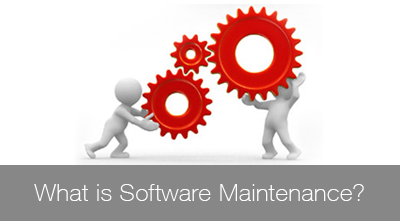What is Software Maintenance?
Software maintenance is defined as the process of modifying a software application after delivery to improve its performance.

Software maintenance is the final step in the software development life cycle, but it is perhaps the most extensive step, as it truly never ends. During the maintenance process, fixes for bugs and flaws not corrected after testing, or revealed after deployment are delivered. Additional functionality, new features and other changes can also be delivered during software maintenance.
Why Does Software Maintenance Matter?
Once upon a time, software was developed, tested and then deployed. That was the end of it. This was prior to the advent of the Internet and the ability to maintain software remotely over time. Think of very old versions of Microsoft Word – once installed, there were no updates delivered. That changed quickly as the Internet made it possible for software developers to address issues well beyond the time of deployment.
Software maintenance matters for many different reasons today. One of those is that it allows developers to address flaws that were not able to be rectified after testing, or those that were not discovered until the software or app had been delivered to the client or deployed to the public. However, that is only one potential reason for maintenance.
Other Types of Software Maintenance
While perhaps most commonly used to correct issues with software, there are many other reasons that software maintenance might be needed. One of those is to address security concerns. While software might be secure on release to the client, emerging threats could create problems that require updates to ensure security against viruses, hackers or malware.
Another reason for software maintenance is to adapt to changing user needs. Think of this type of maintenance as “updates”. You see this from virtually all software developers, including major companies like Microsoft and Apple, as well as every single app developer in existence with an app on the market they keep updated.
Preventative maintenance touches on the issue of security, but there are many other things that a software developer might need to prevent. These include user abuse or exploitation of features or tools within software. It could also be a change to the software to prevent problems from arising in the future.
Ongoing maintenance can be performed to continue to deliver new functionality and features that meet changing user needs over time, and to deliver additional capabilities through the software. A good example of this is how Microsoft Office 365 works. Because it is SaaS, it is constantly kept updated and new features are rolled out on a regular basis. Subscribers never have to pay for a new version of Office, either. They pay a monthly or annual fee, and always have the latest version of Office software on their PC.
As you can see, software maintenance is a vast topic, and it can be necessary for any number of different reasons. It is always critical, though, and it often comprises the single largest source of costs in developing any type of software.